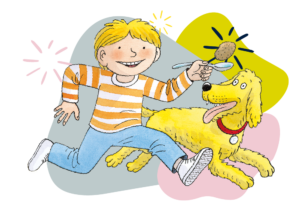Unlocking Imagination: How Oxford Readers Enrich Young Minds and Language Skills

Oxford Readers are a treasure trove for young minds, playing a pivotal role in their language enrichment journey. These thoughtfully crafted books are more than just stories; they are essential tools that lay the foundation for robust language skills. Let’s delve into how these readers benefit kids, ways to introduce and teach them, interactive teaching methods, and other similar book suggestions. We’ll also explore role-play activities and classroom implementations to make learning an engaging and dynamic experience.

https://home.oxfordowl.co.uk/reading/reading-schemes-oxford-levels/oxford-reading-tree-levels/
Benefits of Oxford Readers in Language Enrichment
Structured Reading Levels:
Oxford Readers are meticulously categorized into various levels, ensuring that each book matches a child’s reading ability. This gradual progression helps children build confidence as they master new vocabulary and more complex sentence structures at their own pace.
Engaging Content
With captivating stories and vibrant illustrations, these readers capture children’s imaginations, making reading a fun and immersive experience. Engaging content fosters a love for reading, which is crucial for language development.
Phonics-Based Approach
Many Oxford Readers use a phonics-based approach, helping children understand the relationship between letters and sounds. This method enhances their decoding skills, pronunciation, and spelling.
Comprehension and Critical Thinking
The inclusion of questions and activities in the books encourages children to think critically about the stories, improving their comprehension and analytical skills.
Cultural and Moral Insights
The stories often weave in cultural elements and moral lessons, broadening children’s perspectives and fostering empathy.
Introducing Oxford Readers
Start with the Right Level
Assess your child’s current reading level and choose books that match their abilities. Starting at the right level prevents frustration and promotes confidence.
Create a Reading Routine
Establish a regular reading schedule. Consistency is key to developing a habit. Dedicate a specific reading time every day.
Make It Interactive
Engage with your child by discussing the story, asking questions, and encouraging them to predict what will happen next. Interactive reading enhances understanding and enjoyment.
Interactive Ways of Teaching Oxford Readers
Story Mapping
Use story maps to help children visualize the sequence of events. This aids in comprehension and retention. Encourage them to draw scenes from the story or map out the plot.
Phonics Games
Create phonics games that reinforce the sounds and words introduced in the readers. Flashcards, word bingo, and matching games are great ways to make learning phonics fun.
Reader’s Theater
Turn the story into a play. Assign roles to children and have them act out the story. This boosts their confidence, improves fluency, and makes reading a social activity.
Discussion Circles
After reading, have a discussion circle where children share their thoughts about the story. Pose open-ended questions to foster deeper contemplation.
Other Similar Book Suggestions
Dr. Seuss Books
Known for their rhyming patterns and playful language, Dr. Seuss books are excellent for early readers.
https://www.seussville.com/books/
Biff, Chip, and Kipper Stories
These Oxford Reading Tree books are specifically designed for young readers and offer a similar structured approach.
https://global.oup.com/education/content/primary/series/oxford-reading-tree/
Usborne Young Readers
These books are leveled and come with beautiful illustrations and engaging stories.
https://usborne.com/row/books/browse-by-category/reading-programme/young-reading
Ladybird Readers
Another series that offers graded reading levels and a variety of stories to engage young readers.
https://www.ladybirdeducation.co.uk/books/ladybird-readers/
Role-Play Activities
Character Interviews
Have children take turns being a character from the story and conduct interviews. This activity enhances understanding of character motivations and perspectives.
Story Reenactment
Use simple props and costumes to reenact scenes from the story. This helps with memorization and comprehension.
Alternate Endings
Encourage children to come up with alternate endings for the story and act them out. This fosters creativity and critical thinking.
Implementations in the Classroom
Reading Corners
Set up cozy reading corners with a variety of Oxford Readers. Create a comfortable and inviting space that encourages independent reading.
Book Clubs
Form small reading groups or book clubs where children can read the same book and discuss it together. It fosters social engagement and shared learning.
Interactive Read-Alouds
Conduct interactive read-aloud sessions where children can participate by reading aloud, predicting the plot, and discussing characters and events.
Literature Circles
Assign roles such as summarizer, questioner, connector, and illustrator within small groups. Each student takes on a role to discuss different aspects of the book.
Creative Writing
Use the stories as a springboard for creative writing activities. Encourage children to write their own stories, inspired by what they’ve read.

Oxford Readers are a gateway to language enrichment, offering a blend of structured learning and engaging content. By introducing these readers thoughtfully and employing interactive teaching methods, we can nurture a lifelong love for reading and strong language skills in children.
